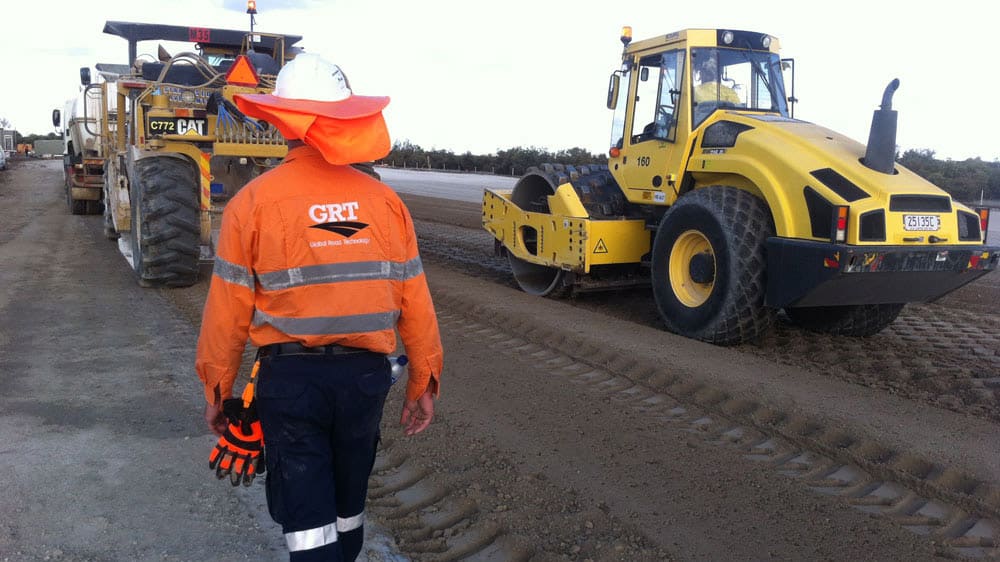Soil index properties are properties which facilitate identification and classification of soils for engineering purposes. Plastic soils (clays) are normally described as cohesive as a distinction from non-plastic soils (sands and gravels) which are often called granular or non-cohesive. Plastic and cohesive are used as synonyms bearing in mind that all plastic soils are cohesive and cohesive soils are plastic. Fundamentally, electrochemical cohesion and geotechnical cohesion measured by a triaxial are very different. Cohesion in clays does not always translate to measurable cohesion that confers shear strength. The 3D network of attraction between negative particles and positive cations leads to plasticity. The nature of some properties differs for coarse- and fine-grained soils.
Coarse-grained (non-cohesive) soil index properties are:
- particle-size distribution
- particle shape
- relative density
- consistency
- clay and clay minerals content
Fine-grained (cohesive) soil index properties are:
- consistency
- particle shape and orientation
- clay and clay minerals content
- water content
One of the soil index properties which describe non-cohesive soils is grading otherwise known as particle size distribution. It gives a measure of the sizes and distribution of sizes of the particles that make up a soil and stands out to be the most fundamental of all properties especially in coarse-grained soils with little or no clay particles. Soil that contains a wide range of particle sizes is named well-graded. The opposite type of soil, which contains narrow range of particle sizes, is categorized as poorly graded. Well-graded soils can be more densely packed. Particle shape also influences how closely particles can be packed together. The density of soil (especially of coarse-grained) is the indication of strength and stiffness. The relative density is the ratio of the actual bulk density and the maximum possible density of the soil. Relative density is a good indicator of potential increases in density, and thus deformations that may occur under the different loads. The two main methods of grading soil are sieve and sedimentation analysis.
Consistency is the resistance of soils to deformation and rupture. The term consistency limits is derived from the notion that soil can exist in any four states, depending on its moisture state. Initially, the soil is in the form of a viscous liquid with no shear strength. As its moisture content is reduced, it begins to attain some shear strength but is still easily moulded, this is the plastic solid phase. Drying regimes reduces its ability to be moulded leading to cracks during moulding in the semi-solid phase. Over time the soil becomes so dry that it is a brittle solid. The unconfined compression strength is often used as an indication of consistency. In practice, the terms soft, medium, stiff, very stiff, and hard are applied to rate consistency of soil. This soil index property describes both cohesive and non-cohesive soils. Consistency at non-cohesive soil depends primarily on particle shape and size distribution, while at cohesive soils this property primarily depends on water content.
Are environmental regulations, health and safety concerns or potential profit loss a concern right now?

Clay and clay minerals content is important soil index characteristic for both coarse- and fine-grained soils. Clay minerals are fine-sized platy silicates with two basics buildings blocks namely silicate tetrahedron and the aluminium or magnesium octahedron which are highly plastic. Clay minerals are distinguished by both their mineralogy and particle size. Therefore, depending on percentage and type of clay minerals, clayey soils are less or more plastic. Plasticity in clays is a function of the electrochemical behaviour of the clay minerals hence soils that possess no clay minerals do not exhibit plasticity and as their moisture content is reduced they change directly from liquid to semi-solid state. The three common groups of clay minerals include kaolinite, illite and montmorillonite.
Water content is very important soil index property of fine-grained soils since their behaviour largely changes with water concentration variations. According to Atterberg there are four states: liquid, plastic, semi-solid and solid. Marginal water contents that separate these states are known as Atterberg limits and these are: shrinkage (SL), plastic (PL) and liquid limit (LL). These limits have different values for different types of fine-grained soils. Moisture content has effects on many properties and is commonly used to calculate dry density from measured bulk density. Water is held within soil pores where the attraction between water and surfaces of soil particles greatly restricts the ability of water to flow as it would flow in a drinking glass. Soil water is never pure water, it contains hundreds of dissolved organic and inorganic additives which makes it more a soil solution. When water enters the soil, it displaces air from the some of the pores hence the air content of a soil is inversely proportional to its water content.
The Unified Soil Classification gives each soil type a two-letter designation. For coarse grained soils, the first letter, either G for gravel or S for sand, refers to the dominant particle size in the soil. The second letter is either W, for well graded or P, for poorly graded. The second letter can also be M for silt or C for clay if coarse-grained soils contain more than 12% of silt or clay. The first letter of the designation for fine-grained soils is M or C (silt or clay). The second letter, either H (high) or L (low), refers to the plasticity of the soil. So for examples in the gravel-sand mixtures, GW would denote well-graded, clean whereas in the sands and sandy soils, SW would denote well graded, clean as well. In fine-grained soils of low plasticity, ML denotes silts whilst in fine-graded soils of high plasticity MH denotes silts as well. The variations of these four soil descriptions are in maximum dry density and optimum moisture content.
GRT products enable improvement of all soil types and make them suitable for various engineering purposes. The natural soils with highest level of unconfined compression strength (UCS) are categorized as hard soils when UCS is more than 0.4MPa. Through use of GRT stabilizers in dosages of 0.75 to 1.5% deliver UCS results ranging from 2 – 5.8MPa can be achieved. GRT9000 and GRT: PCM showed outstanding results when implemented in either granular or plastic soils, and thus options are available for stabilizing of soils with wide variety of soil index properties.
Stabilisation of Type 2 pavement material with 1% GRT9000 showed a UCS result at 5 days in excess of 6.5MPa. Comparative UCS results in cement stabilized type 2 gravels, require in excess of 5 and 6%, and up to 8% cement by mass for the lower sub-types. When it comes to fine-grained highly plastic soils GRT PCM is needed in much lower concentrations than lime and cement. In the case of soils with plasticity index higher than 20 (for which is lime considered very efficient stabilizer), general recommendation is 3-5% of lime or 3-7% of cement, while GRT PCM is needed in concentration as low as 0.75%.
Your feedback is important to us. If you enjoyed reading this Global Road Technology industry update and found it informative, please let us know by leaving a REVIEW.
REFERENCES
- Carter, M., and Bentley, S.P. Soil Properties and Their Correlations. 2016. 2nd Edition. John Wiley & Sons. West Sussex. United Kingdom.
- Molenaar. A.A.A. 2015. Cohesive and Non-Cohesive Soils and Unbound Granular Materials for Bases and Sub-Bases in Roads. TU Delft. Netherlands.
- Weil, R.R. and Brady, N.C. 2017. The Nature and Properties of Soils. 5th Edition. Pearson Education Limited. Essex. England.
MORE INDUSTRY ARTICLES
April 12, 2024
Fortescue Flicks-On QLD Electrolyser Plant
April 11, 2024
Can Australia Become a Renewable Energy Superpower?
MORE INDUSTRY ARTICLES
April 12, 2024
Fortescue Flicks-On QLD Electrolyser Plant
April 11, 2024

